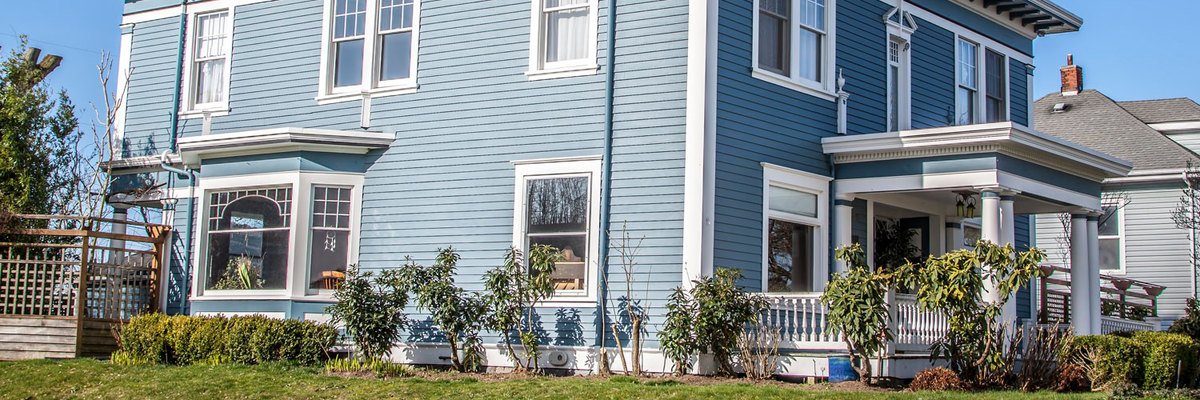How to Insulate a Hardie Board Sided Home with Injection Foam Insulation


Your home has hardie board siding and you love the way it looks and want to keep it that way.
The challenge that has popped up is your walls are cold, you feel drafts, and it’s nearly impossible to keep a constant temperature in your home. You know you need insulation in your walls, but you’re left wondering how the installation will take place.
When it comes to installing injection foam insulation, it is not as easy as vinyl or aluminum siding, but the good news is that it can be done.
As a project manager, I have worked with a number of homeowners with hardie board siding, so in this article, I will be answering all your questions as to how RetroFoam of Michigan handles the installation from the outside. I’ll even briefly explain how the installation can be done from the inside as well.
Now I’ll explain what exactly hardie board is and the installation process.
What is Hardie Board Siding?
Hardie board is constructed of cement materials and cellulose fibers and is a very durable siding material.
It looks great as well. The look can be similar to vinyl or aluminum siding or in the form of siding shingles.
Hardie board is very expensive, not only in the cost of the material but also in the labor for installation. Cost aside, hardie board is completely rot and insect resistant. It’s also fire resistant as it is 90 percent sand.
Most manufacturers will have a 50-year warranty, so that should tell you something.
How Do You Put Insulation Under Hardie Board Siding?
There is a possibility the hardie board can get damaged or broken while being removed in the installation process.
Although it is very durable, trying to remove it is another story. This is why some homeowners opt to do the installation from the inside, because they may not have any extra pieces laying around just in case.
Insulating a Home with Hardie Board Siding from the Outside
The process for removing hardie board siding is more complex than vinyl or aluminum siding.
The crew will carefully and evenly pull up the board to the exposed nail. They may have to cut the nail heads off if there is an issue removing them. The crews will also need to cut out any existing caulk.
Once the siding has been removed, 2 1/2-inch holes are drilled into each stud cavity. A member of the crew will run a Slim Jim up and down the cavity looking for any obstructions. This also helps the installer get a better idea of the size of the cavity from top to bottom and side to side.
Next, the foam is injected into each wall cavity.
Once all of the cavities have been filled, the hardie board siding needs to be put back into place.
Reinstalling hardie board mirrors the process of reinstalling vinyl and aluminum.
There is a lot more to it than just reattaching the siding. If the removal went as planned and all the nails came out, the crew can use the existing holes to drive the nails through.
If the nails had to be cut off, the crew will need to drill new holes to nail through.
Finally, the crew will re-caulk the siding with the closest color match possible. Then they clean up any mess and return the house to the same condition it was in before the installation began.
Maybe you don’t want to chance it by doing the installation from the outside. We have good news, as insulating from the inside is an option.
Insulating Existing Walls from the Inside
If you’re worried that your hardie board siding might get damaged and you don’t have any pieces to spare, then installing the foam from the inside is possible.
There are some things you’ll need to do before the installation.
We recommend moving all your furniture about 6-feet from the exterior walls, so the crews have enough room to work. You should also remove any photos or anything you have hanging on the walls.
If there is furniture you can’t move out of the way, just let the crew know and they will be able to cover those items for you.
The crews will make sure your furniture, floors, counters, etc. are covered so you don’t end up cleaning a bunch of drywall dust.
Once everything is covered, a member of the crew will put a chalk line on all of the exterior walls, so the holes are centered on that line. As the chalk line is drawn, another crew guy is drilling the holes, as another follows along to inject the foam.
After the foam has been injected, the holes are filled with a Styrofoam plug that is covered with drywall repair tape and drywall mud. The only thing the homeowner needs to do is sand the mud and paint over it.
The mud is smoothed out and then the team cleans up the mess leaving your home look like it did before they got there.
Adding Foam Insulation to Your Existing Home
Now that you know how your exterior walls can be insulated, why stop there?
Spray foam insulation can be used in your attic, crawl space, and rim joist to completely seal your building envelope. What does that mean? It means no more cold floors, air leaks, or uncomfortable rooms, just to name a few of the things foam can help with.
If you want to read about more of the benefits of foam insulation, head over to our Learning Center and check out all of our resources.
Related Articles
Installing Injectable Foam Insulation for Existing Homes from the Inside
Installing RetroFoam into Exterior Walls with Different Siding Types
About Steve Storms
Steve has worked with customers in his previous career from small clients to large corporations. When visiting homeowners, Steve ensures he assesses the home’s insulation needs. He then lets the homeowner know what are the best options to solve their problems. He uses the skills he learned from several management courses when working to help customers. Steve has a very large family and enjoys bowling with them in his free time.


